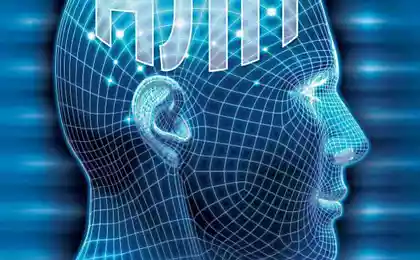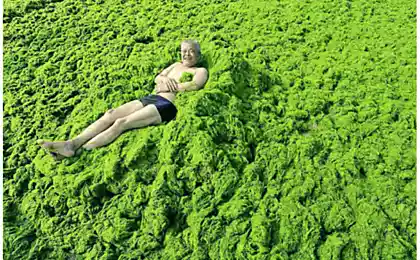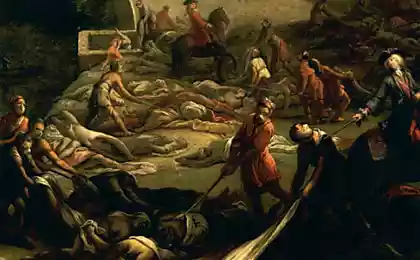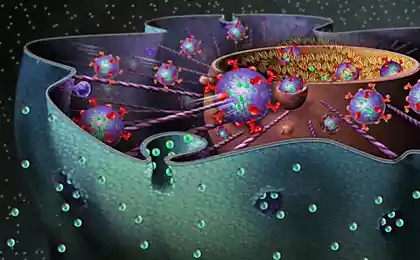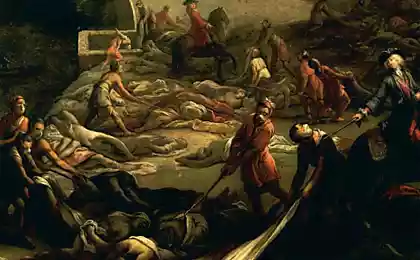570
Found evidence that viruses are living organisms
Flu, SARS, Ebola, HIV, the flu — these names we are all familiar with. Viruses — small pieces of genetic material (DNA or RNA) packaged in a protein shell. But we still don't know whether viruses are living organisms or not. A new study by American scientists, the results of which were published yesterday, could change our opinion about viruses. Developing a reliable method of studying the long evolution of viruses, researchers have found evidence that viruses are actually alive.

For a long time, scientists believed that viruses are not alive, they only "cut off" from other cells DNA and RNA. And actually, the virus doesn't fall under the definition of life as we understand it now. There are many vital processes, such as the ability to metabolism that viruses do not possess. Viruses carry out only one life process — reproduction, but for this they need to hijack another cell and use its genetic tools.
But over the last ten years began to emerge, the evidence, saying that viruses can be alive. One of them was the opening of mimivirus gigantic viruses with huge genomic libraries that can be larger than some bacteria. For comparison, the Ebola virus only seven genes.
Despite these discoveries, the main issue continued to be the evolutionary history of viruses. Scientists from the University of Illinois and the Institute of Carl Woese took on an ambitious task to trace the evolution of viruses. Viruses definitely evolyutsioniruet — ask any doctor — and we have a huge variety of (currently described at least 4900 species, but their number is estimated at several million).
Because small RNA and DNA replication is partially mixed with the DNA of a cell carrier, at the division of virus often have a mutation. This greatly complicates the study of their evolutionary history, says biology Professor Gustavo Catano-Anolis.
To solve this problem, scientists paid attention to the protein chain — unique forms of proteins that allow the viruses and the cells to perform their basic functions. The forms of these circuits are coded in the genes and do not change over time, in contrast to DNA and RNA viruses, which allows to look into their past.
The researchers analyzed protein chains 5080 organisms — 3460 1620 viruses and cells representing all branches of the tree of life. The results showed that 442 protein chains were common to viruses and cells, and only 66 unique to viruses.
This suggests that the viruses had similar once with the cell functions (and thus was alive), and then evolved. Such a process, in which the simpler organisms, called "reductive evolution".
"Viruses exist in the form of primitive cells, explains PhD student, Institute of Carl Woese Arshan Nasir. Ancient cells, which exist primitive viruses were last common ancestor that preceded the diversification of life about 2.45 billion years ago.
At some point, the genomes of these ancient viral cells are reduced, whereby the latter turned into viruses as we know them today.
"Modern viruses restore their "cell" to exist when any cell is captured, says Nasir. — Thus, at the beginning of the virus and the cell existed as a single whole. Today, they are separated, but can restore their relationship by viral infected cells."
Scientists hope that their discovery will make the world's scientific community to include viruses in the picture of cellular evolution. published
P. S. And remember, only by changing their consumption — together we change the world! ©
Join us in Facebook , Vkontakte, Odnoklassniki
Source: hi-news.ru

For a long time, scientists believed that viruses are not alive, they only "cut off" from other cells DNA and RNA. And actually, the virus doesn't fall under the definition of life as we understand it now. There are many vital processes, such as the ability to metabolism that viruses do not possess. Viruses carry out only one life process — reproduction, but for this they need to hijack another cell and use its genetic tools.
But over the last ten years began to emerge, the evidence, saying that viruses can be alive. One of them was the opening of mimivirus gigantic viruses with huge genomic libraries that can be larger than some bacteria. For comparison, the Ebola virus only seven genes.
Despite these discoveries, the main issue continued to be the evolutionary history of viruses. Scientists from the University of Illinois and the Institute of Carl Woese took on an ambitious task to trace the evolution of viruses. Viruses definitely evolyutsioniruet — ask any doctor — and we have a huge variety of (currently described at least 4900 species, but their number is estimated at several million).
Because small RNA and DNA replication is partially mixed with the DNA of a cell carrier, at the division of virus often have a mutation. This greatly complicates the study of their evolutionary history, says biology Professor Gustavo Catano-Anolis.
To solve this problem, scientists paid attention to the protein chain — unique forms of proteins that allow the viruses and the cells to perform their basic functions. The forms of these circuits are coded in the genes and do not change over time, in contrast to DNA and RNA viruses, which allows to look into their past.
The researchers analyzed protein chains 5080 organisms — 3460 1620 viruses and cells representing all branches of the tree of life. The results showed that 442 protein chains were common to viruses and cells, and only 66 unique to viruses.
This suggests that the viruses had similar once with the cell functions (and thus was alive), and then evolved. Such a process, in which the simpler organisms, called "reductive evolution".
"Viruses exist in the form of primitive cells, explains PhD student, Institute of Carl Woese Arshan Nasir. Ancient cells, which exist primitive viruses were last common ancestor that preceded the diversification of life about 2.45 billion years ago.
At some point, the genomes of these ancient viral cells are reduced, whereby the latter turned into viruses as we know them today.
"Modern viruses restore their "cell" to exist when any cell is captured, says Nasir. — Thus, at the beginning of the virus and the cell existed as a single whole. Today, they are separated, but can restore their relationship by viral infected cells."
Scientists hope that their discovery will make the world's scientific community to include viruses in the picture of cellular evolution. published
P. S. And remember, only by changing their consumption — together we change the world! ©
Join us in Facebook , Vkontakte, Odnoklassniki
Source: hi-news.ru
In Germany, owners of electric vehicles will receive special privileges
XE – a device that will allow you to charge smartphones through the air

